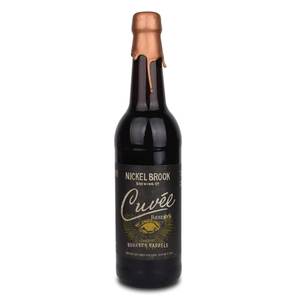CodeSection
Well-Known Member
- Joined
- Feb 4, 2018
- Messages
- 1,655
- Reaction score
- 818
I only bottle since I give away 95% of what I brew. I have no plans to keg. I'm posting here since I desire to reduce O2 as much as possible.
My current bottling process involves racking into a bottling bucket; pouring in priming solution after a couple of gallons are in the bottling bucket; once five gallons are in the bucket, give it some stirs with a very large spoon to make sure priming solution is mixed well; place clear plastic plate that floats on top of beer to reduce O2 exposure; put lid on bucket; start filling up bottles with a filler tube; fill bottle and place cap loosely on it after dipping cap in Starsan solution; and finally cap bottles once I have bottled five bottles. Then repeat filling bottles steps....
In my search to try to find ways how to reduce potential oxidation, I found this http://brulosophy.com/2018/05/10/7-methods-for-reducing-cold-side-oxidation-when-brewing-beer/. More importantly, I found near the bottom of the article: Closed System Bottling.
What are your thoughts of the setup and process described in the article? In the past, I wanted to avoid using a beer gun like Blichmann's Beer Gun because it appeared to me a very slow process when bottling 104-108 bottles at a time. I have had no oxidation issues thus far and I'm guessing the beer is consumed within a week or two of when individuals receive it. Though, it may be a month to six weeks after bottling before the individuals come by and get them.
Is using a closed system bottling method worth it? Is the Blichmann's Beer Gun easy to use? Are the benefits just too small as compared with the cost of additional equipment and possible extra time involved in bottling?
As always, I appreciate your insights.
My current bottling process involves racking into a bottling bucket; pouring in priming solution after a couple of gallons are in the bottling bucket; once five gallons are in the bucket, give it some stirs with a very large spoon to make sure priming solution is mixed well; place clear plastic plate that floats on top of beer to reduce O2 exposure; put lid on bucket; start filling up bottles with a filler tube; fill bottle and place cap loosely on it after dipping cap in Starsan solution; and finally cap bottles once I have bottled five bottles. Then repeat filling bottles steps....
In my search to try to find ways how to reduce potential oxidation, I found this http://brulosophy.com/2018/05/10/7-methods-for-reducing-cold-side-oxidation-when-brewing-beer/. More importantly, I found near the bottom of the article: Closed System Bottling.
What are your thoughts of the setup and process described in the article? In the past, I wanted to avoid using a beer gun like Blichmann's Beer Gun because it appeared to me a very slow process when bottling 104-108 bottles at a time. I have had no oxidation issues thus far and I'm guessing the beer is consumed within a week or two of when individuals receive it. Though, it may be a month to six weeks after bottling before the individuals come by and get them.
Is using a closed system bottling method worth it? Is the Blichmann's Beer Gun easy to use? Are the benefits just too small as compared with the cost of additional equipment and possible extra time involved in bottling?
As always, I appreciate your insights.




